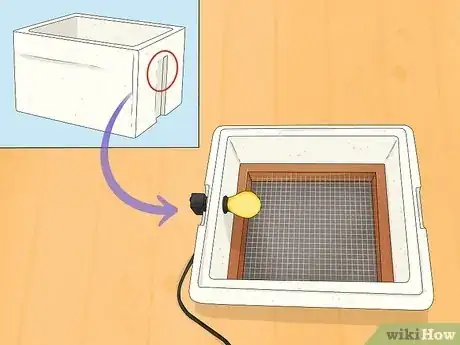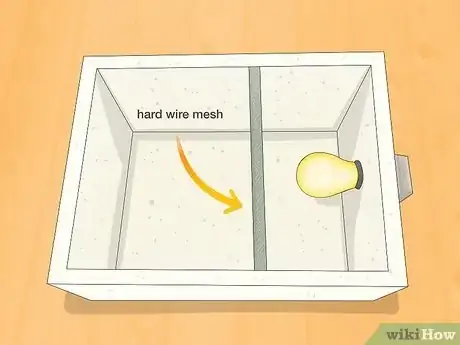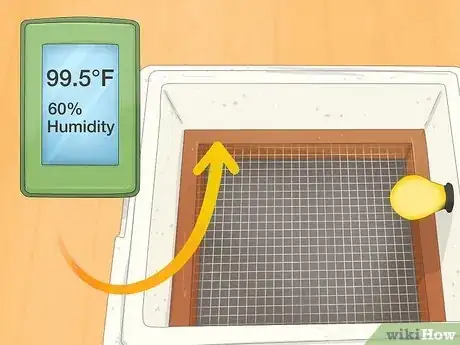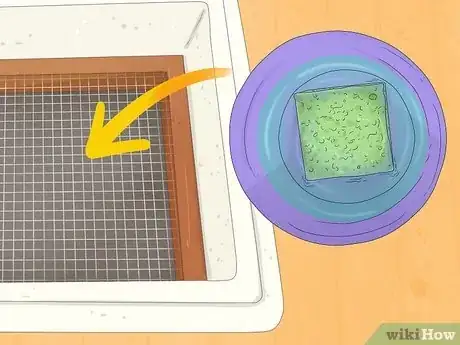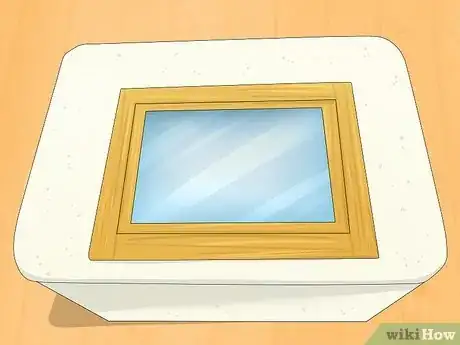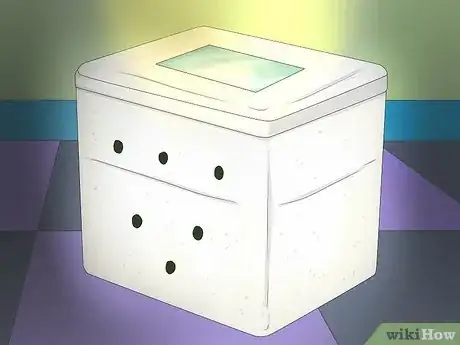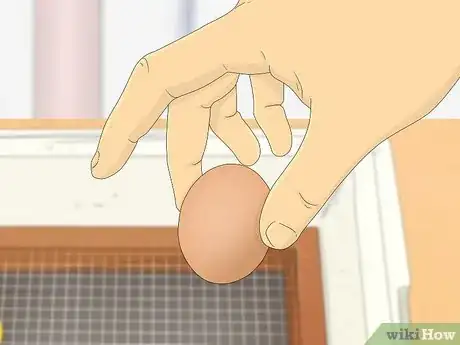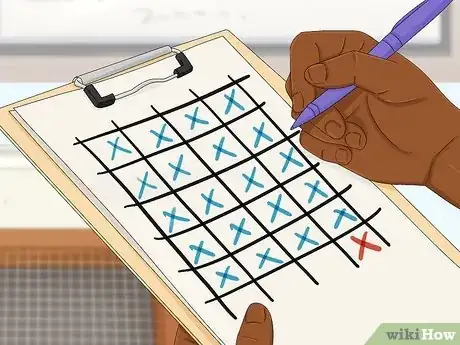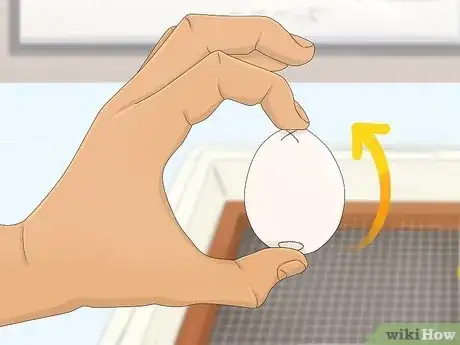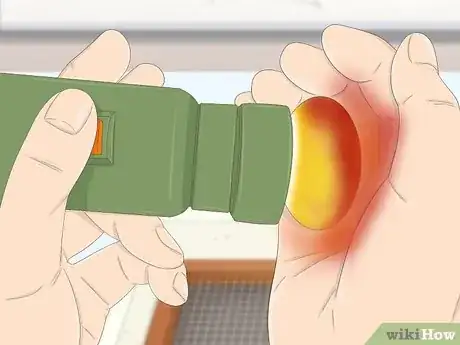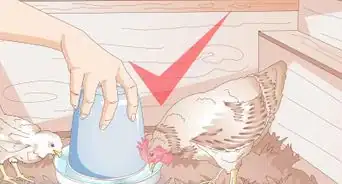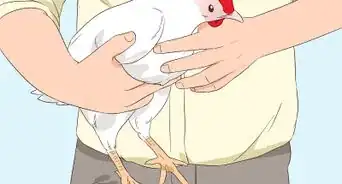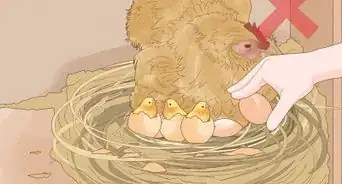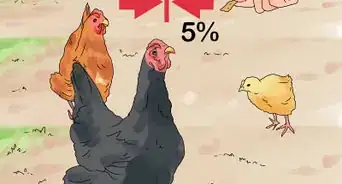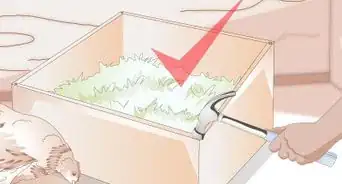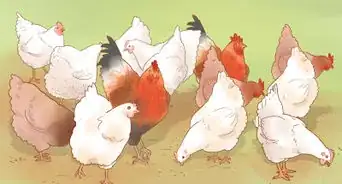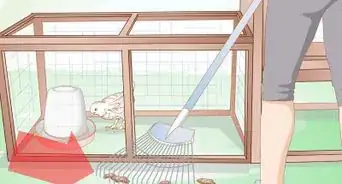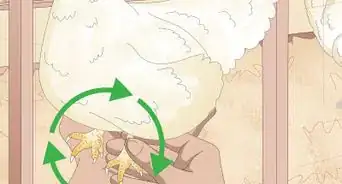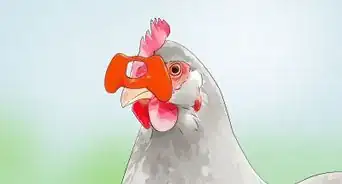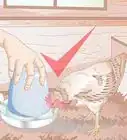wikiHow is a “wiki,” similar to Wikipedia, which means that many of our articles are co-written by multiple authors. To create this article, 24 people, some anonymous, worked to edit and improve it over time.
wikiHow marks an article as reader-approved once it receives enough positive feedback. This article has 66 testimonials from our readers, earning it our reader-approved status.
This article has been viewed 1,041,012 times.
Learn more...
Raising chickens at home has become popular recently since more people have become educated about the plight of hens raised in factory farms. Hatching chickens can be a fun family project, too. While the costs of buying an incubator are quite high, it is a relatively simple process to make one at home. You probably already have the ingredients sitting around your house right now.
Steps
Making the Incubator
-
1Cut out a hole at one end of a styrofoam cooler. The hole will contain the light bulb and its socket. Insert the socket from any lamp and put in a 25 watt bulb.[1] Place duct tape around the hole and the socket from inside and outside the cooler. This is very important in order to reduce the risk of fire.
- You can also use a small box, but a styrofoam cooler works well because it is insulated.
-
2Divide the cooler in two sides. Using chicken mesh or some other hard wire mesh, partition off the side of the cooler where the light bulb sits. Doing this is important to protect the chicks from getting burned.
- Optional: Create a false bottom using chicken mesh a little above the floor of the cooler. This will make cleaning out the chicken poop easier once the chicks hatch.
Advertisement -
3Add your digital thermometer and humidity gauge. Place it on the side where the eggs will be. Since the main function of an incubator is to keep the temperature and humidity inside it at an optimal level, be sure that the thermometer/gauge has a high rate of accuracy..
-
4Add in a bowl of water. This will be your humidity source. Put in a sponge, too, so that you can adjust the amount of water easily.
-
5Cut a viewing portal in the cooler's lid. Using the glass from a picture frame, determine how big the opening needs to be. It should be a little smaller than the dimensions of the glass. Then secure the glass by using duct tape to fasten it in the opening.
- Optional: Make a hinge for the cooler's lid by attaching it to one side of the top with duct tape.
-
6Test the incubator. Before putting in the eggs, turn on the light and monitor the temperature and the humidity for a day or so.[2] Make adjustments to the heat and humidity until they are at optimal levels. The temperature should be kept at 99.5 degrees through-out the incubation. Optimal humidity varies: it should be between 40 to 50 percent for the first 18 days and 65 to 75 percent during the last four.
- To reduce the temperature, punch holes in the sides of the cooler. If it gets too low after you do that, tape up some of the holes with duct tape.
- For the humidity, sponge up some of the water to reduce it and squeeze out more water to increase it.
-
7Put in your chicken eggs. It's important to find fertilized eggs: store-bought eggs will not work. If you don't have any chickens and a rooster yourself, a good way to find fertilized eggs is to contact local farmers. Once you have your eggs, cluster them close together, as this helps them maintain a constant temperature.
- The quality of the eggs depends on the health of the chickens they came from. Therefore, before purchasing eggs from a farm, ask the manager if you can inspect the facility. Free-range hens are almost always healthier than caged hens.
- An optimal hatching rate is between 50 and 85 percent.[3]
- Laying hens are usually smaller in size and are bred to produce eggs. Meat hens, on the other hand, are bred for size. They tend to be larger birds that grow relatively quickly. However, there are chickens that are bred as dual-purpose birds. Ask the farmers you contact which variety they breed.
Incubating the Eggs
-
1Keep track of time and vital statistics. Chicken eggs take 21 days to hatch, so it's important to know the exact day you put them in the incubator. Also, keep track of the humidity and temperature readings.
-
2Rotate the eggs. Turn the eggs one quarter to half a turn three times daily for the first 18 days. You want to turn then so that one side faces down and the other up. Mark one side of each egg with "X" and the other side with an "O" to keep track of which side is facing up.
-
3Candle the eggs after the first week. Candling allows you to detect infertile and bad eggs. It involves holding an egg against a bright light in a dark room to see inside. You can purchase a candling device, but for most situations, a small, bright flashlight will do. If you find any bad or infertile eggs, remove them from the incubator.
- If you use a flashlight, its lens should be the small enough so that the light is directed at the egg.
- Another way to make a homemade candler[4] is to insert a desk lamp inside a cardboard box with a small round hole cut at the top. Put the egg in this hole to candle it.
- You may have to gently turn the egg up and down or from side to side to better see its contents.
- A living embryo[5] appears as a dark spot with blood vessels radiating out from it.
- A dead embryo can show up as a ring or a streak of blood inside the shell.
- Infertile eggs light up bright and even since there is no embryo inside.
-
4Listen for the sounds of the chicks starting to hatch. On the 21st day, the chicks will "pip" their shells in order to breathe after bursting the air sacks. Watch them carefully after this point. It can take up to twelve hours after "pipping" for a chick to fully emerge from its shell.
- If some of the chicks haven't concluded their hatching after twelve hours, go ahead and remove the tops of those eggs.
Community Q&A
-
QuestionShould I leave the lamp on 24 hours a day?
 Community AnswerYes, it is important to keep the chicks consistently warm.
Community AnswerYes, it is important to keep the chicks consistently warm. -
QuestionWhere should we put the chicks when they hatch?
 Community AnswerLeave the chicks in the incubator one hour after they hatch or until they're all dry. Then you'll need to move them to a brooder. The brooder is where the chicks will spend the first weeks of their lives. It can be a simple cardboard box but it must contain a heat lamp, bedding, chick food and water.
Community AnswerLeave the chicks in the incubator one hour after they hatch or until they're all dry. Then you'll need to move them to a brooder. The brooder is where the chicks will spend the first weeks of their lives. It can be a simple cardboard box but it must contain a heat lamp, bedding, chick food and water. -
QuestionWhat kind of box should be used for an incubator?
 Community AnswerAny insulated box will do. Coolers are inexpensive, and work great.
Community AnswerAny insulated box will do. Coolers are inexpensive, and work great.
References
- ↑ http://www.stormthecastle.com/how-to-make-a/how-to-make-a-homemade-egg-incubator.htm
- ↑ http://modernfarmer.com/2015/04/how-to-incubate-chicken-eggs/
- ↑ http://www.small-farm-permaculture-and-sustainable-living.com/hatching_chickens.html
- ↑ https://poultrykeeper.com/incubating-and-hatching-eggs/candling-eggs/
- ↑ http://keeping-chickens.me.uk/chickens/how-to-hatch-eggs/candling-eggs
About This Article
If you want to raise chicks at home with an incubator, purchase a styrofoam cooler and cut a hole in one end. Then, slide the socket of a lamp and a 25 watt light bulb through the hole, and duct tape around the hole on the inside and outside of the container. Use chicken wire to divide the container in half, with the bulb on one side of the container to prevent the chicks from getting burned. Next, place a digital thermometer and humidity gauge in the box along with a bowl of water, and turn the light on to test the incubator. For tips on adding a viewing window and properly incubating the chicks, scroll down!
